
Posted on 09/21/2012 4:20:57 AM PDT by Homer_J_Simpson


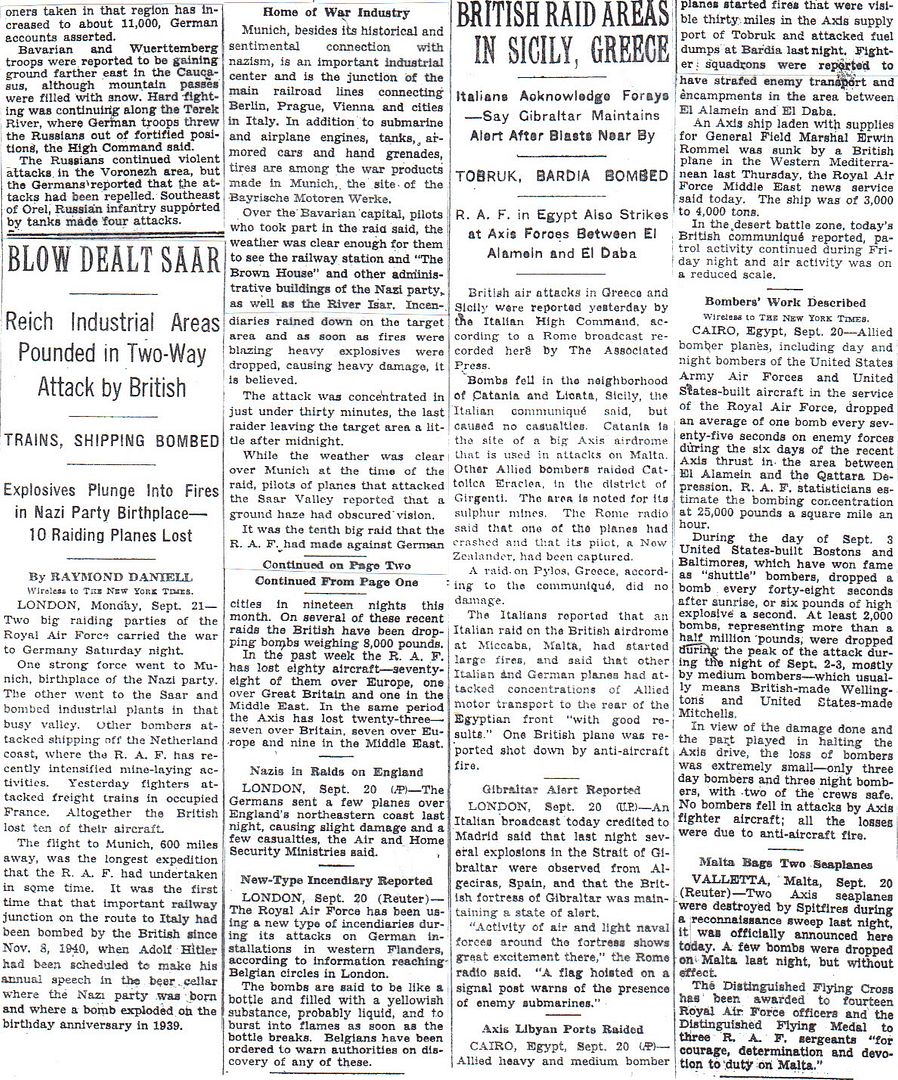
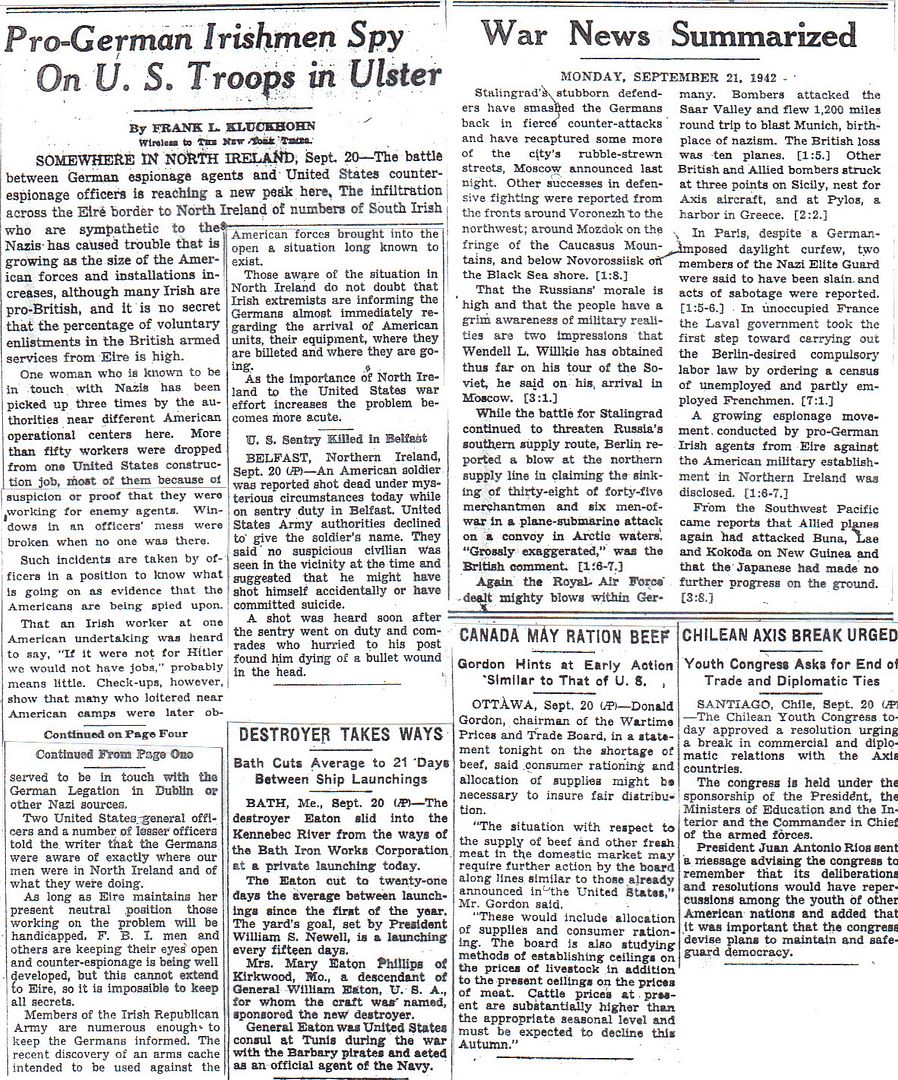

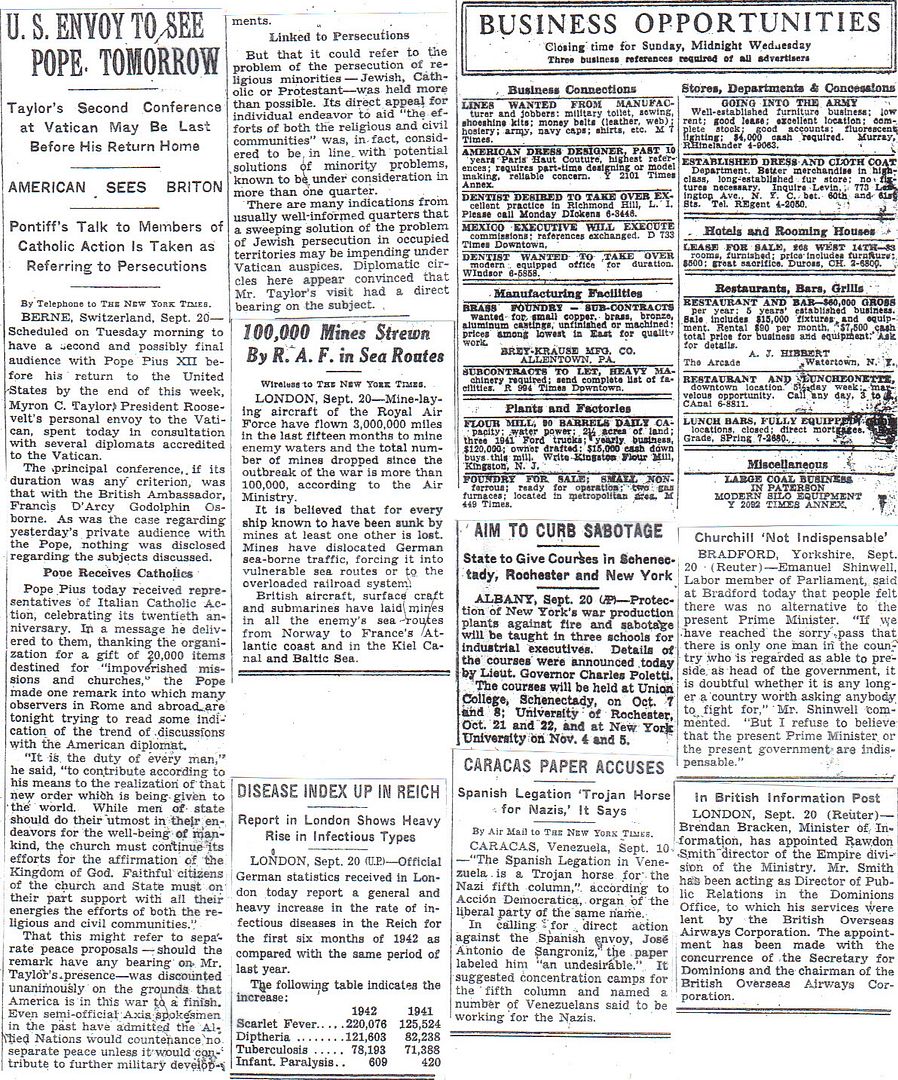
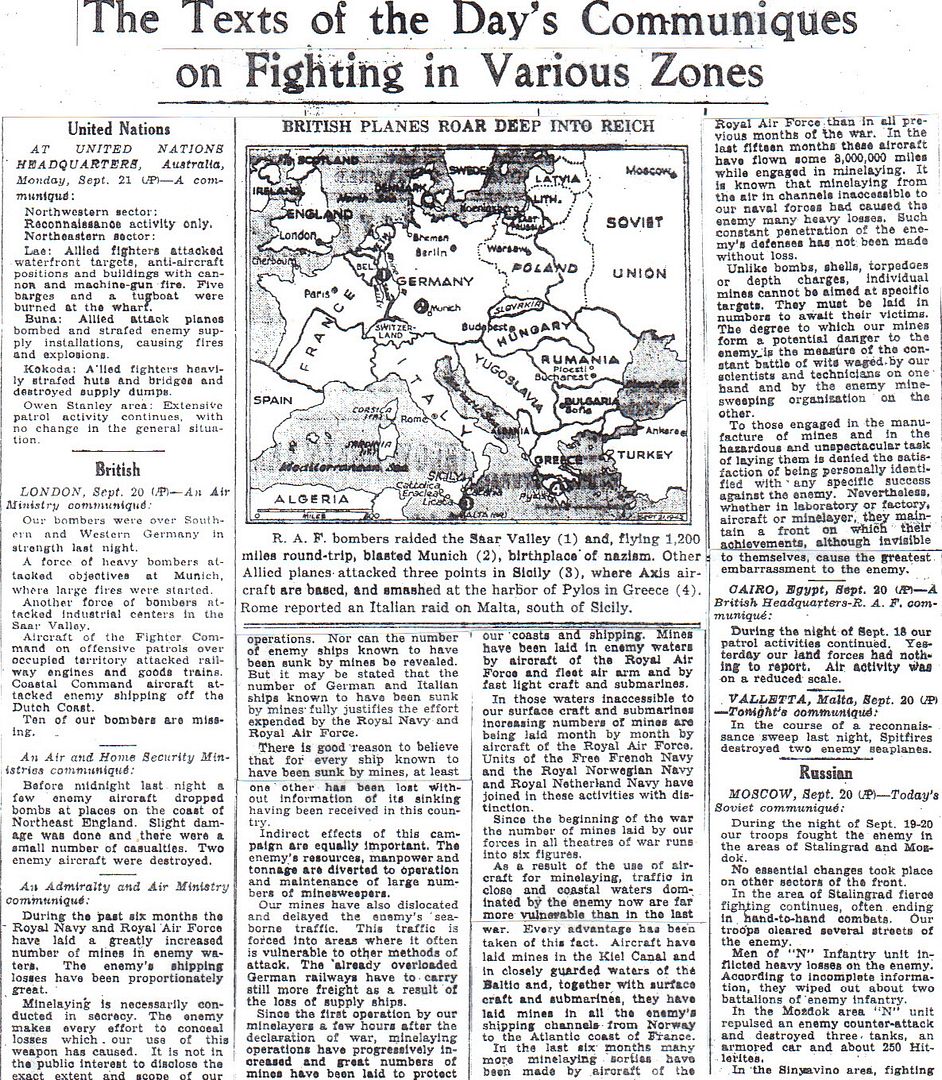

http://www.onwar.com/chrono/1942/sep42/f21sep42.htm
Swedish fascists lose in voting
Monday, September 21, 1942 www.onwar.com
From Stockholm... In the Swedish national elections, pro-Nazi candidates fare badly.
http://homepage.ntlworld.com/andrew.etherington/frame.htm
September 21st, 1942
SWEDEN: The national elections show the pro-Nazi candidates doing very poorly.
BALTIC SEA Sea: U-446 (Type VIIC) allocated to the Danzig (training) flotilla 8, is sunk by a mine near Kahlberg in the Gulf of Danzig, . 23 dead. Raised 8 Nov, 1942, the submarine was not recommissioned and was scuttled at Kiel on 3 May 1945, before finally being broken up in 1947. (Alex Gordon)
U.S.S.R..: Most of southern Stalingrad is now in German hands, except for the vast grain elevator, held by 30 Guards and 18 Sailors. Soviet Sailors used as infantry win a tremendous reputation with friend and foe alike for their tenacity, as those at Stalingrad are Arctic Fleet veterans. In Stalingrad’s center, German troops try to break through to the left flank of the Tsaritsa River, but are slowed by heavy Soviet artillery fire. (Jack McKillop)
After three days of continuous fighting the Soviet 92nd Naval Rifle Brigade captures an important strongpoint - an elevator. Having removed their peacoats and wearing only their striped undershirts, subunits of naval infantrymen rose to the counterattack 10 to12 times a day fighting with fire and bayonet.
There were but 20 to 30 persons left in the companies, and there were 17 in 1st Company, 4th battalion (CO,Senior Lieutenant G.S. Filimonov; political instructor Junior Political Instructor D.N. Zolotnikov). In just two days 17 seamen repelled 14 attacks, destroyed eight tanks and over 150 Germans. Senior Lieutenant F.S.Zhukov, the communist battalion commander, killed 18 Germans. Petty Officer 2nd Class V.V. Borisoglebskiy hit three tanks with an anti-tank rifle, and Red Navy Seaman V.N.Balatsin, a Komsomol member, annihilated two tanks. Communist Red Navy Seaman A.L. Kudrevatyy,who allowed the Germans to get within 25 to 30 meters of his position, cut down 26 of them with fire from his machinegun.
Machinegunner I.V. Repin destroyed an enemy tank and killed 10 Germans with an anti-tank rifle he picked up from the battlefield. The brigade’s military commissar, S.N.Shapin, was mortally wounded in the fighting. (Russell Folsom)(215 Chap. 3)
UNITED KINGDOM: London: Figures released by the Allies claim that 207,373 non-Jews have been executed by the Germans in occupied Europe.
ATLANTIC OCEAN: U-606 shot down RAF Catalina aircraft (Squadron 330/Z). The battle took place around convoy QP-14. Crew of aircraft rescued by HMS Marne.
U-772 laid down.
U-854 laid down.
U-175 sank SS Presednik Kopajtic. (Dave Shirlaw)
ALEUTIAN ISLANDS: US Eleventh Air Force bombers fly reconnaissance over Kiska Island and bomb and fire Constantine Harbor installations at Amchitka Island. (Jack McKillop)
U.S.A.: The Boeing XB-29-BO Superfortress, USAAF s/n 41-002, msn 2482, makes its first flight at Boeing Field, Seattle, Washington. (Jack McKillop)
Destroyer USS Abbot laid down.
Submarine USS Corvina laid down.
Minesweepers USS Palisade and Opponent laid down.
Destroyer USS De Haven commissioned. (Dave Shirlaw)
NEW GUINEA: Artillery of the Australian 14th Field Regiment sited at Ower’s Corner, about 3 miles (4,6 kilometres) south of Imita Ridge, pounds the Japanese all day. (Jack McKillop)
In the air, USAAF Fifth Air Force P-40s bomb and strafe bridges and targets of opportunity along the Buna-Kokoda trail. The two RAAF P-40 squadrons at Milne Bay, Nos 75 and 76, are relieved by the USAAF’s 35th and 36th Fighter Squadrons flying P-39s. (Jack McKillop)
BURMA:The British go on the offensive with the Indian 14th Division advancing in the Arakan, from Chittagong via Cox’s Bazar down the Mayu peninsula. The intention is to seize the peninsula, then from there to Akyab and seize Japanese airfields that the British fear may be used to bomb Calcutta and other Indian cities. Lord Wavell’s troops are not ready for jungle warfare, and he lacks the seaborne component planned for this operation. He launches it anyway, even though the Arakan “is not fit to fight in.” To reach Akyab, British and Indian troops must traverse more than 160 miles (257 kilometres) of mangrove swamps, river and rice paddies. (Jack McKillop)
PACIFIC: USN submarines sink two Japanese ships: (1) USS Grouper (SS-214) sinks an army cargo ship in the China Sea, east of Shanghai and (2) USS Trout (SS-202) sinks an auxiliary netlayer south of Truk Atoll in the Caroline Islands. (Jack McKillop)
" 'Men to the left! Women to the right!'
In his classic Holocaust memoir, Night, Elie Wiesel recalls that an SS man barked those orders as Hungarian Jews left the railroad cattle cars that transported them to Auschwitz-Birkenau in the spring of 1944.
"Form fives!" Wiesel heard, as a selection began to determine who would go to the gas chambers.
"Such commands were part of death-camp methodology, a system invented by Nazis who became specialists in the destruction of Jewish life.
The killing centers at Chelmno, Belzec, Sobibor, Treblinka, and Majdanek, as well as Birkenau, combined to make 1942 the most catastrophic year of the Holocaust.
"The destruction process varied from place to place, but the similarities increased the "Final Solution's" efficiency.
As 1942 unfolded, packed rail transports regularly brought European Jews from ghettos and transit camps to the Nazi killing centers in Poland.
When the trains reached their destinations, the dead had to be separated from the living.
Next, those unable to walk were culled out and shot so that foot traffic on paths to the gas chambers could move more rapidly.
"The more-or-less able-bodied were segregated by sex, which split up families.
Babies and small children remained with their mothers.
At Belzec, Sobibor, and Treblinka, no further selection took place (except for a few people who were selected to work in the camp).
Within hours virtually all arrivals in those three camps were gassed after giving up valuables, clothes, and hair.
"At Auschwitz (pictured), which was a huge slave-labor camp as well as a killing center, the Selektion was more detailed.
Under the supervision of SS physicians such as Dr. Josef Mengele, and depending on the camp's needs, smaller or larger numbers of healthy men and women between the ages of 18 and 40 were singled out for "extermination through work."
The new laborers were sheared, tattooed, registered, inadequately clothed, starved by meager food, sleep-deprived, sickened by deficient sanitation, condemned to exhausting labor, demoralized and sometimes tortured by their captors, and always endangered by further selections.
During work hours, they confronted a brutal routine that racked body and spirit to the breaking point.
Relatively few survived.
"At Majdanek and Auschwitz, those who failed the selection for slave labor walked on toward death.
After their clothes and valuables were stripped away and their hair was shorn, they were gassed.
Before their bodies were burned, gold fillings were harvested.
After cremation, ashes that were not dumped in ponds or rivers became fertilizer.
"This process produced huge amounts of booty.
The system ensured that nothing was wasted--except, of course, millions of Jewish lives."
A fascinating list!
Note where the brand new Mustang stands, and PBY Catilina is bumped off by... what?
according to the Sunday Times London, September 20, 1942:
#1 Single-seater fighter -- British Spitfire: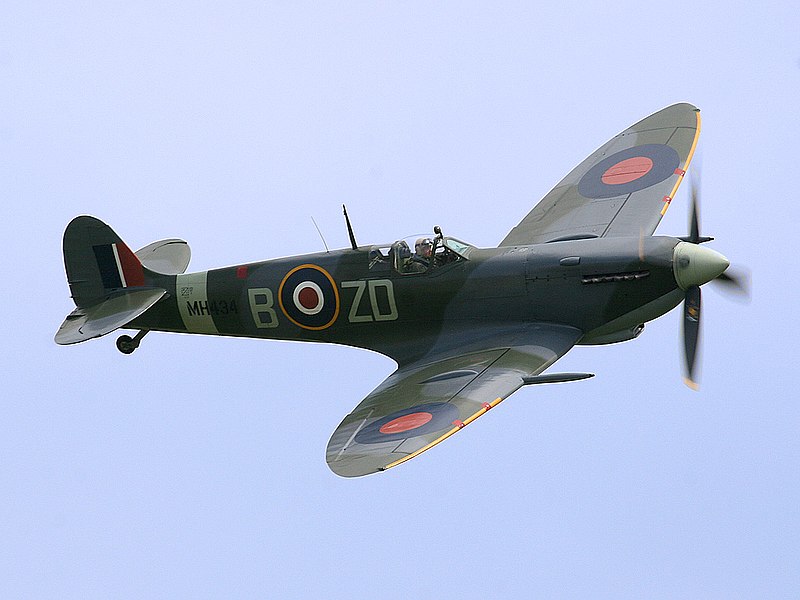
#2 Long-range night fighter -- British Beaufighter: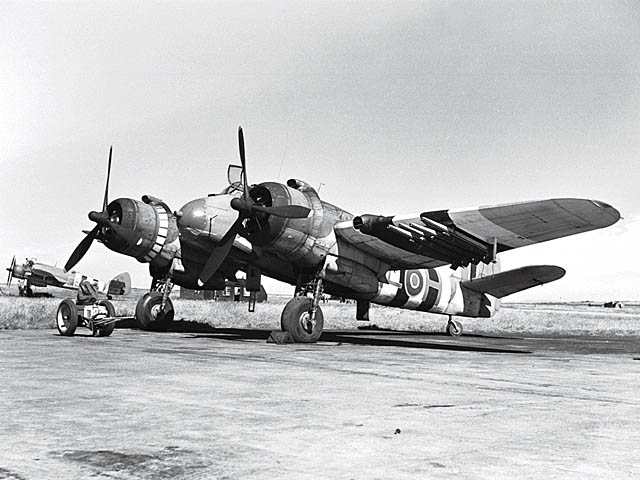
#3 Medium Bomber -- Germany's Dornier DO-17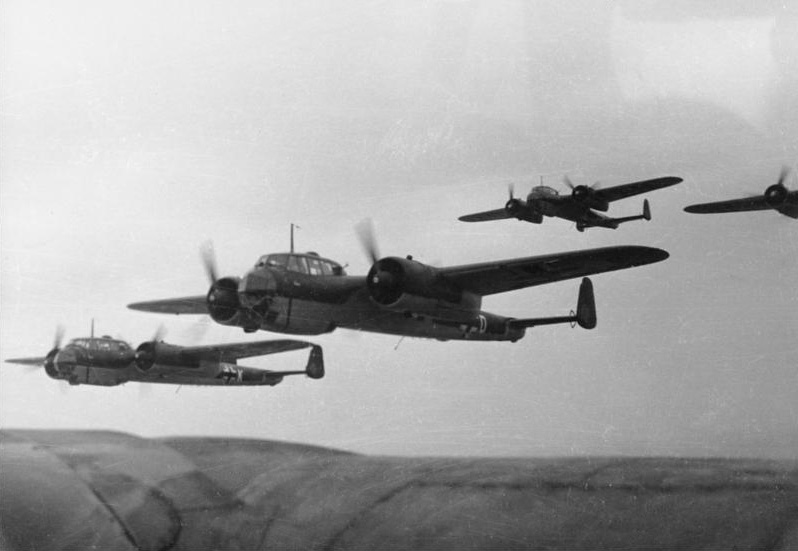
#4 Heavy Bomber -- British Lancaster
#5 Land-based torpedo bomber -- Italy's Savola-Marchetti 84
#6 Army cooperation scout -- United States North American Mustang 
#7 Long-range patrol boat -- United States Consolidated Coronado
#8 Transport land plane -- United States Douglas DC-4
#9 Transport seaplane -- United States Boeing Clipper
#10 Naval Fighter -- United States Vought-Sikorsky Corsair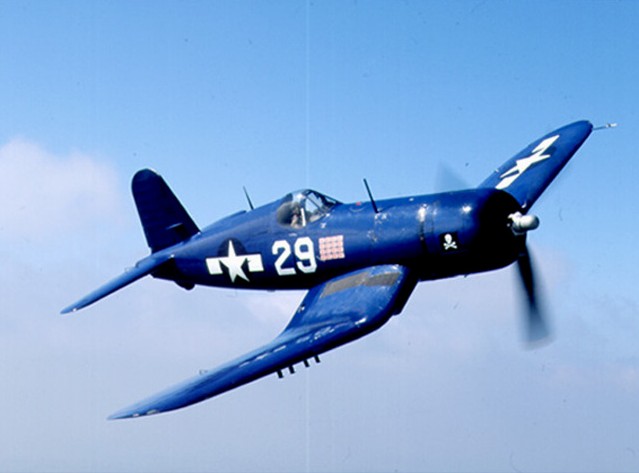
#11 Naval torpedo bomber -- United States Grumman Avenger
#12 Naval dive bomber -- United States Curtis Helldiver
Does anyone agree with this 1942 British list?
Helldiver = POS. Worse than the plan it replaced, Douglas Dauntless.
They dissed the Japanese. I’d put the Betty as a better land based torpedo bomber than the Savoia-Marchetti; Bettys and Nells sank HMS Prince of Wales and Repulse.
The Avenger was not as good as the Nakajima B5N Kate, and I’d say it’s a toss up between the Curtis Helldiver and the Yokosuke D4Y Judy, both of which entered service in 1942.
I noticed that too. The Betty is clearly better as a land based torpedo bomber. I would also put the B-25 ahead of the Do-17.
Noticeably absent was “Best Ground Attack Plane.”
Candidates for 1942:
Ju 87 Stuka
Il 2 Stormovik
Hawker Hurricane
P-47s, Tempests and Typhoons are not yet available as GAPs.
As one who was born a little before WWII, I have taken an interest in the travails it caused and the strategy involved - and the political background, too.My immediate reaction to the headline about British bombing was to reflect ruefully on Bomber Harris.
During the Second World War, Allied air forces dropped nearly two million tons of bombs on Germany, destroying some 60 cities, killing more than half a million German citizens, and leaving 80,000 pilots dead. But the terrible truth is that much of the bombing was carried out against the expressed demands of the Allied military leadership, leading to the needless deaths of hundreds of thousands of civilians. - Fire and Fury: The Allied Bombing of Germany, 1942-1945One point made in the fascinating
is that carpet bombing wasn’t accepted politically in America - at least for Europe.
- The New Dealers' War:
- FDR and the War Within World War II
by Thomas Fleming
American aerial warfare strategy in Europe was to attempt daylight precision bombing, ultimately succeeding in choking off German fuel consumption. And, when the fighters were given the mission of attacking the Luftwaffe instead of merely escorting the bombers relatively passively, the combination of fuel strangulation by the bombers and aircraft/aircrew decimation of the Luftwaffe by the fighters clearly shortened the war.Whereas the British under Harris carpet bombed civilians in city after city, obliterating cultural landmarks wholesale - and continued on the theory that civilian disruption, which had not weakened the Third Reich at 50% devastation of all German cities, would become effective at 75% devastation - or at 100%. Harris had it in hand to redouble US bombers’ attenuation of German fuel production, but - even when confronted with intelligence from Ultra that the German military was appalled at the effect of fuel-supply bombing on its capabilities - Harris continued to concentrate on carpet bombing of German cities when he could have magnified the effect of the American effort that they knew was working. And even to complain that the American bombers weren’t supporting his priority.
Of course when it came to Japan, the American strategy was exactly what the British strategy in bombing Germany had been. And with the A-bomb, of course, it worked . . .
I’ll start with a question for the panel of experts:
Had the P-51 been fitted with a decent engine by this point? Or was it still underpowered?
As for heavy bomber, clearly the B-17 should win. And for land transport, I’m thinking the Constellation should edge the DC-4.
I would vote the Il-2 myself with the Hurricane a close second.
Curtis Helldiver: 
Douglas Dauntless: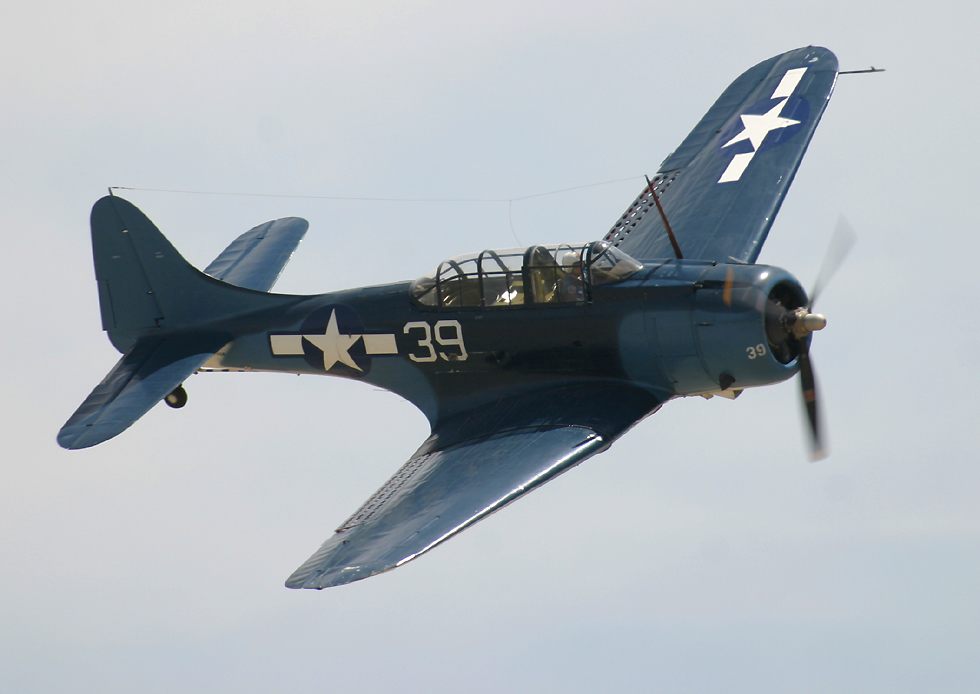
Japanese Mitsubishi G4M "Betty":
Savola-Marchetti 84: 
henkster: "The Avenger was not as good as the Nakajima B5N Kate..."
Nakajima B5N Kate:
Grumman Avenger:
henkster: "...it’s a toss up between the Curtis Helldiver and the Yokosuke D4Y Judy, both of which entered service in 1942."
Yokosuke D4Y Judy:
Curtis Helldiver: 
Boeing B-25:
Germany's Dornier DO-17: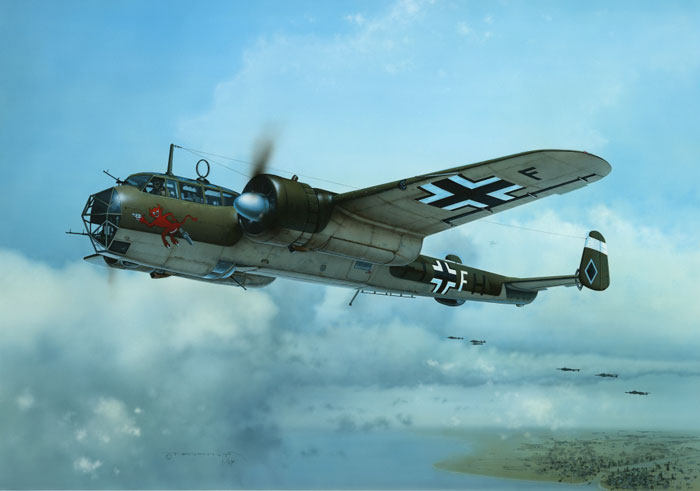
It's curious they didn't mention the British de Havilland DH.98 Mosquito, introduced in 1941:
Or the US Lockheed P-38 Lightning, introduced in 1941: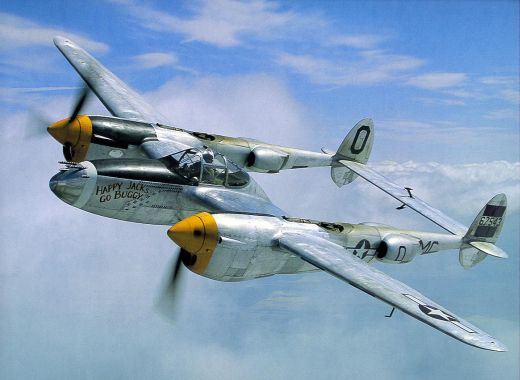
Disclaimer: Opinions posted on Free Republic are those of the individual posters and do not necessarily represent the opinion of Free Republic or its management. All materials posted herein are protected by copyright law and the exemption for fair use of copyrighted works.